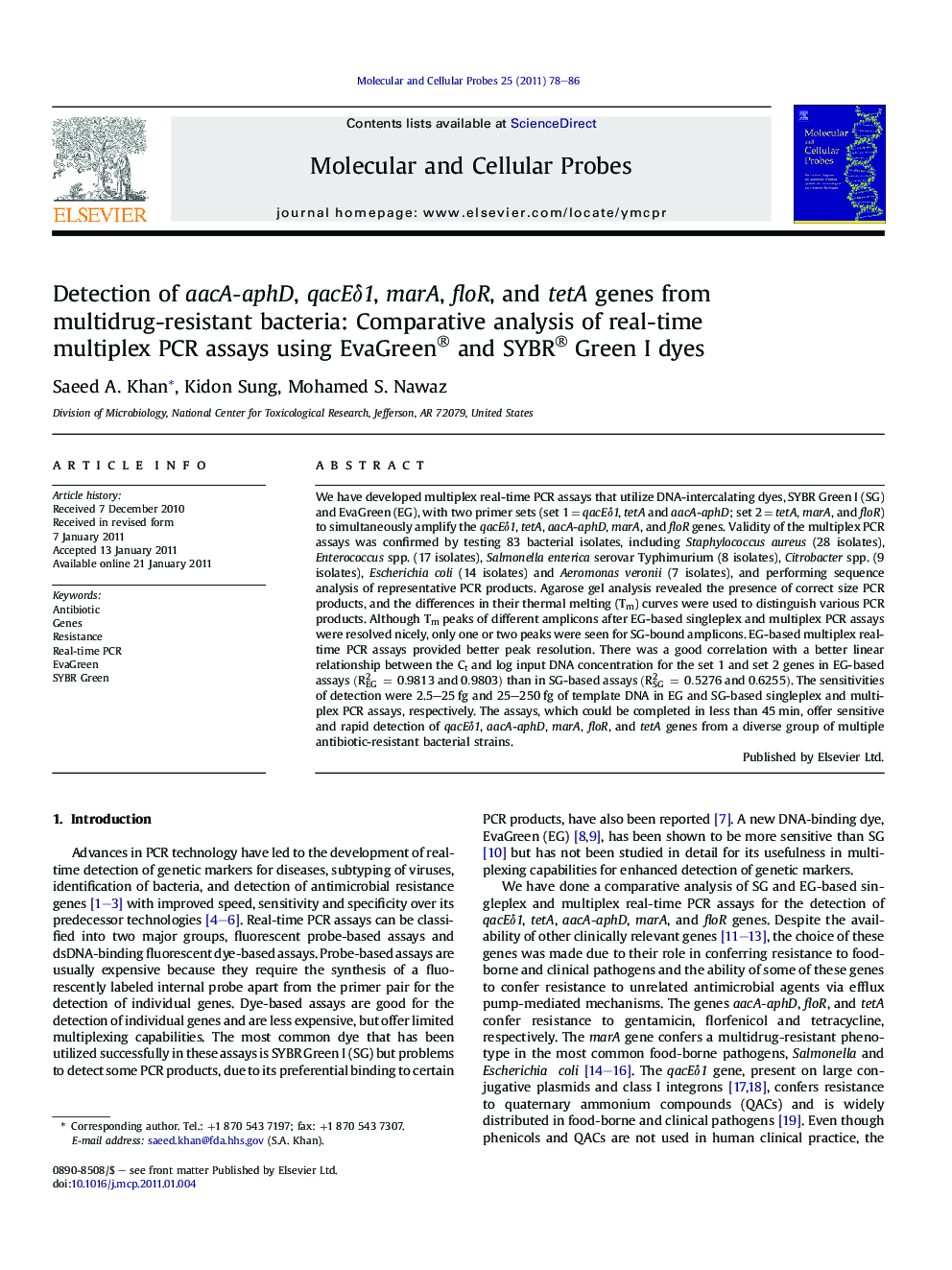| Article ID | Journal | Published Year | Pages | File Type |
|---|---|---|---|---|
| 2199835 | Molecular and Cellular Probes | 2011 | 9 Pages |
We have developed multiplex real-time PCR assays that utilize DNA-intercalating dyes, SYBR Green I (SG) and EvaGreen (EG), with two primer sets (set 1 = qacEδ1, tetA and aacA-aphD; set 2 = tetA, marA, and floR) to simultaneously amplify the qacEδ1, tetA, aacA-aphD, marA, and floR genes. Validity of the multiplex PCR assays was confirmed by testing 83 bacterial isolates, including Staphylococcus aureus (28 isolates), Enterococcus spp. (17 isolates), Salmonella enterica serovar Typhimurium (8 isolates), Citrobacter spp. (9 isolates), Escherichia coli (14 isolates) and Aeromonas veronii (7 isolates), and performing sequence analysis of representative PCR products. Agarose gel analysis revealed the presence of correct size PCR products, and the differences in their thermal melting (Tm) curves were used to distinguish various PCR products. Although Tm peaks of different amplicons after EG-based singleplex and multiplex PCR assays were resolved nicely, only one or two peaks were seen for SG-bound amplicons. EG-based multiplex real-time PCR assays provided better peak resolution. There was a good correlation with a better linear relationship between the Ct and log input DNA concentration for the set 1 and set 2 genes in EG-based assays (REG2=0.9813and0.9803) than in SG-based assays (RSG2=0.5276and0.6255). The sensitivities of detection were 2.5–25 fg and 25–250 fg of template DNA in EG and SG-based singleplex and multiplex PCR assays, respectively. The assays, which could be completed in less than 45 min, offer sensitive and rapid detection of qacEδ1, aacA-aphD, marA, floR, and tetA genes from a diverse group of multiple antibiotic-resistant bacterial strains.
